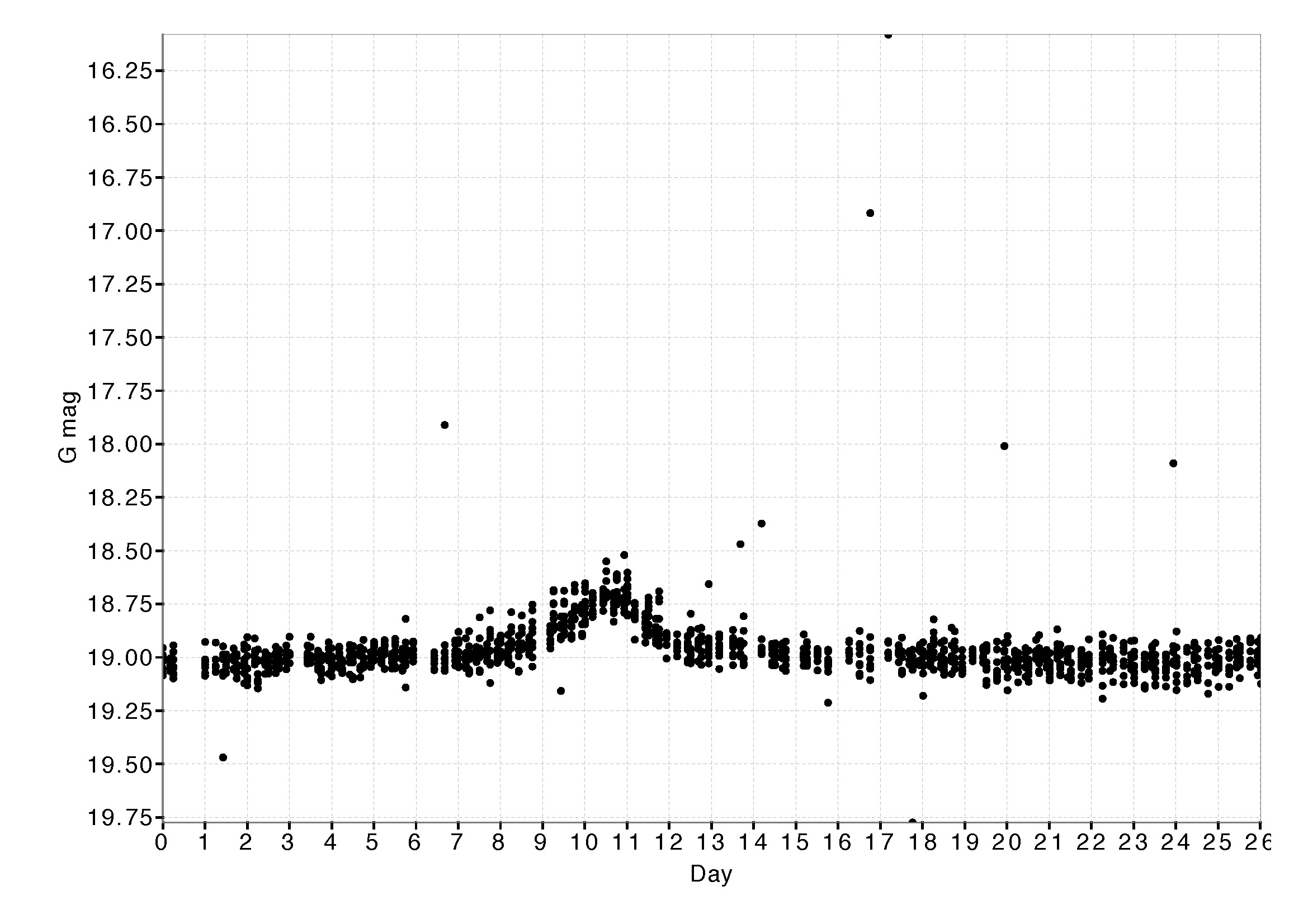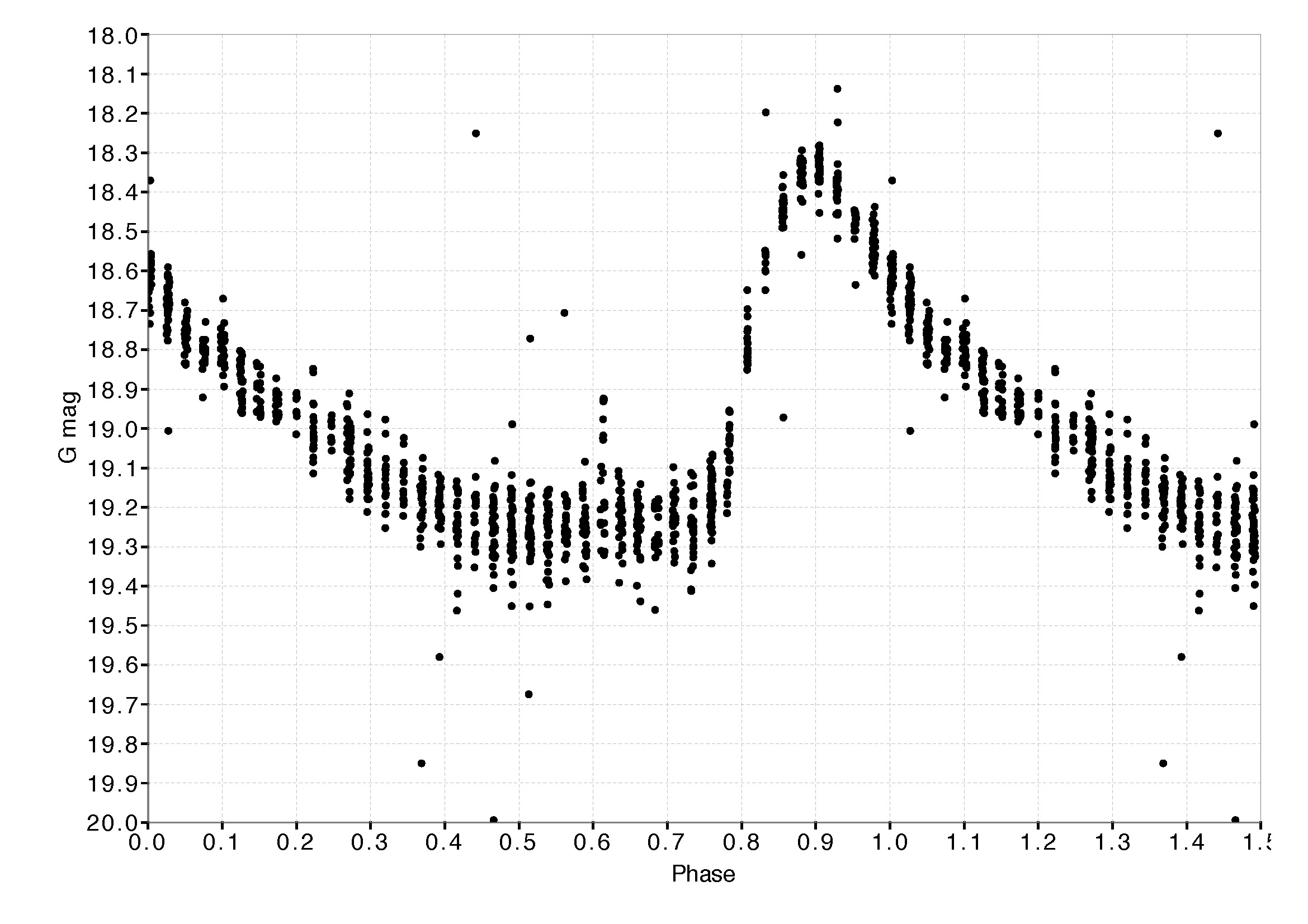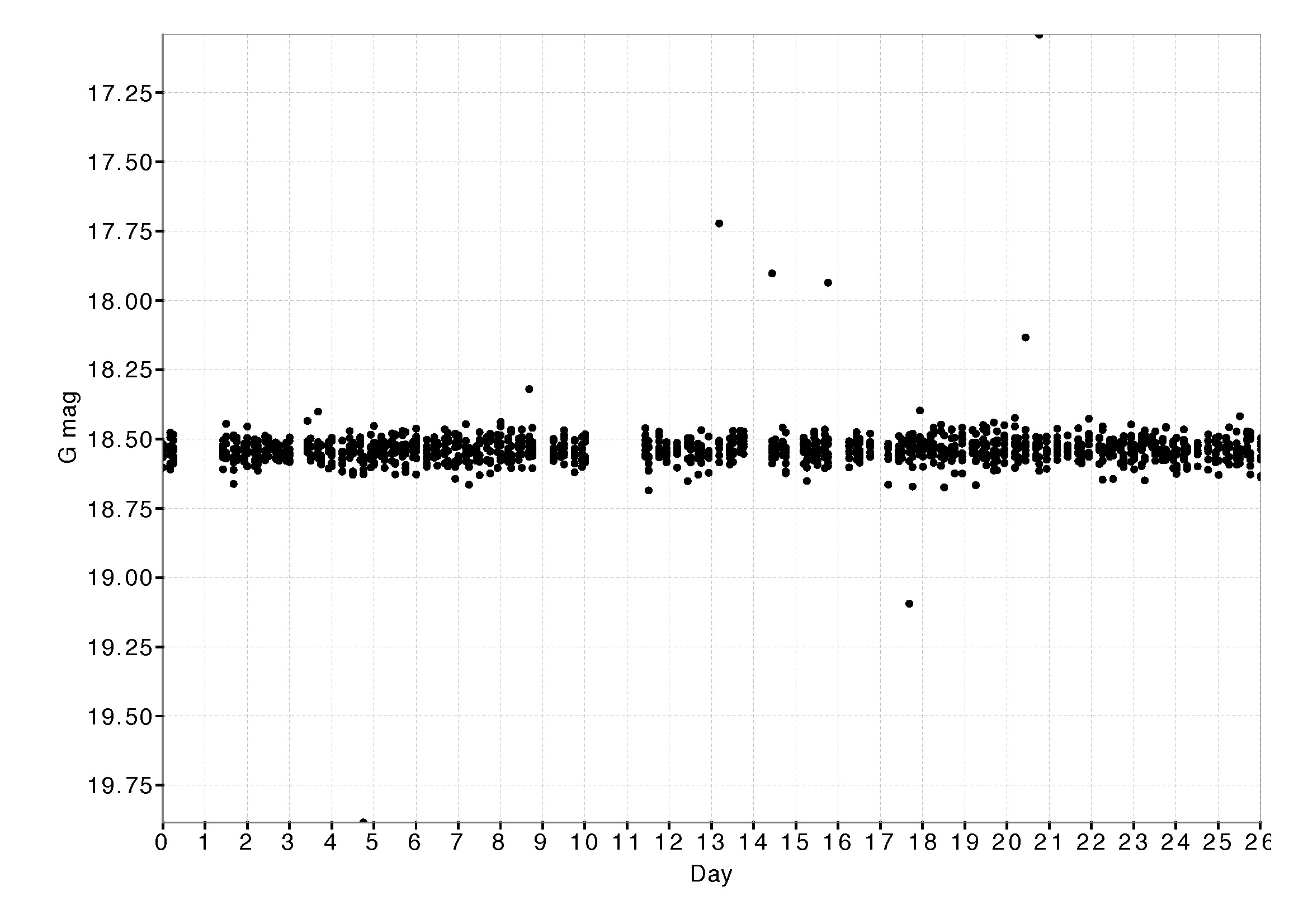IoW_20141212 - Gaia
Image of the Week |
Gaia detects Microlensing event1 |
|
plot a): Microlensing event1 detected in EPSL mode |
|
By Dafydd Wyn Evans and Marco Riello Over the past few weeks CU5 has been busily processing the photometry of the Ecliptic Pole Scanning Law (EPSL) data as part of the 5th DPAC Operations Rehearsal. During EPSL mode, Gaia scans over the ecliptic poles very frequently, thus enabling us to get very good time coverage. It is good fortune that the South Ecliptic Pole (SEP) is also in the direction of the Large Magellanic Cloud. |
|
plot b): RR Lyrae variable star |
| As part of the CU5 validation process, known variables and constant sources were checked. Light curves were plotted of the sources with the largest number of observations. Plot b) shows an RR Lyrae and plot c) a constant source. Doing this was to see if the photometry had any variations with time, in order to check the photometric calibration quality at this early stage. As can be seen there are some outliers that need investigation. |
|
plot c: photometrically constant star |
|
While Dafydd Wyn Evans was in the process of checking the photometric time series of the stars observed by Gaia, Simon Hodgkin pointed out that one of the plots looked like a good candidate for a microlensing event. This is shown in plot a) at the top of the page. credits: ESA/Gaia/DPAC/Dafydd Wyn Evans and Marco Riello [Published: 12/12/2014] 1 It has subsequently been found that the increase in brightness that looked like a microlensing event was caused by a diffraction spike from a nearby bright star. Due to the nature of the scanning law, the spike passed over the source in question and caused the apparent increase in brightness. This provides a salient example of the caution that should be exercised when trying to analyse outlier events at this early stage in the mission. [Published: 17/06/2016] |
- Removed a total of (7) style text-align:center;
- Removed a total of (5) style text-align:justify;
- Removed a total of (1) border attribute.
- Removed a total of (1) cellpadding attribute.
- Removed a total of (1) cellspacing attribute.
Image of the Week Archive
- Removed a total of (1) border attribute.
- Removed a total of (1) cellpadding attribute.
- Removed a total of (1) cellspacing attribute.








































 Sign in
Sign in
 Science & Technology
Science & Technology



